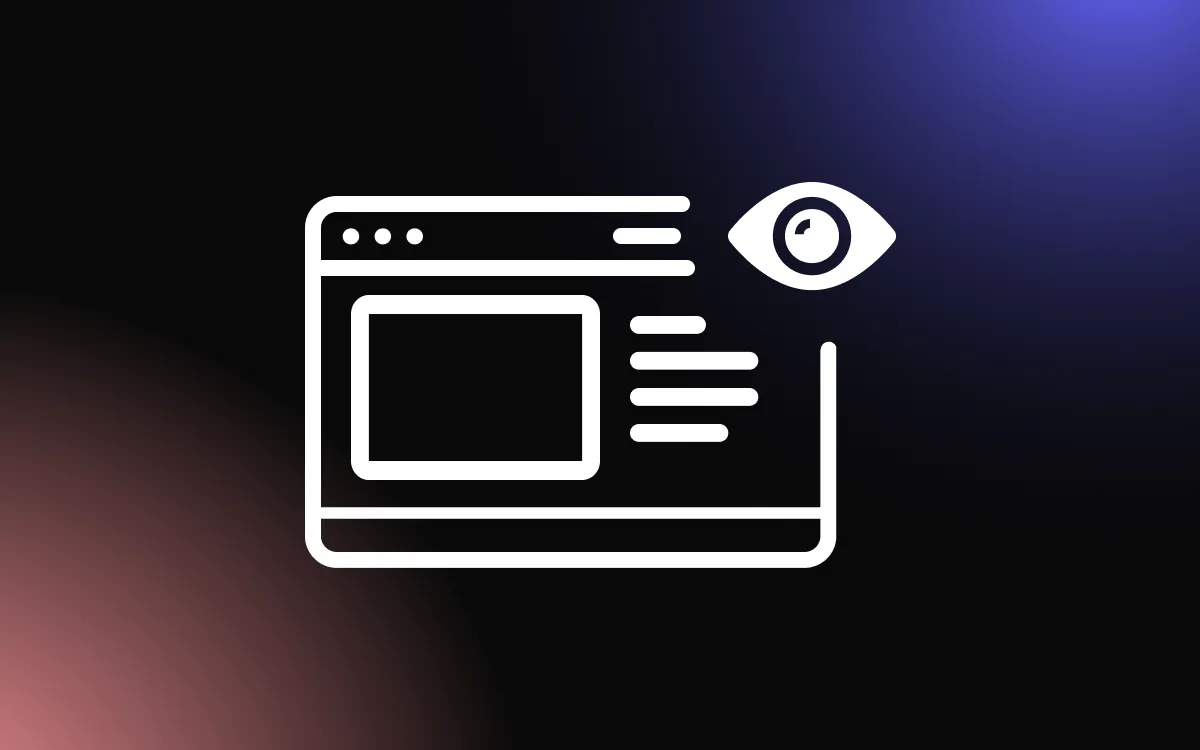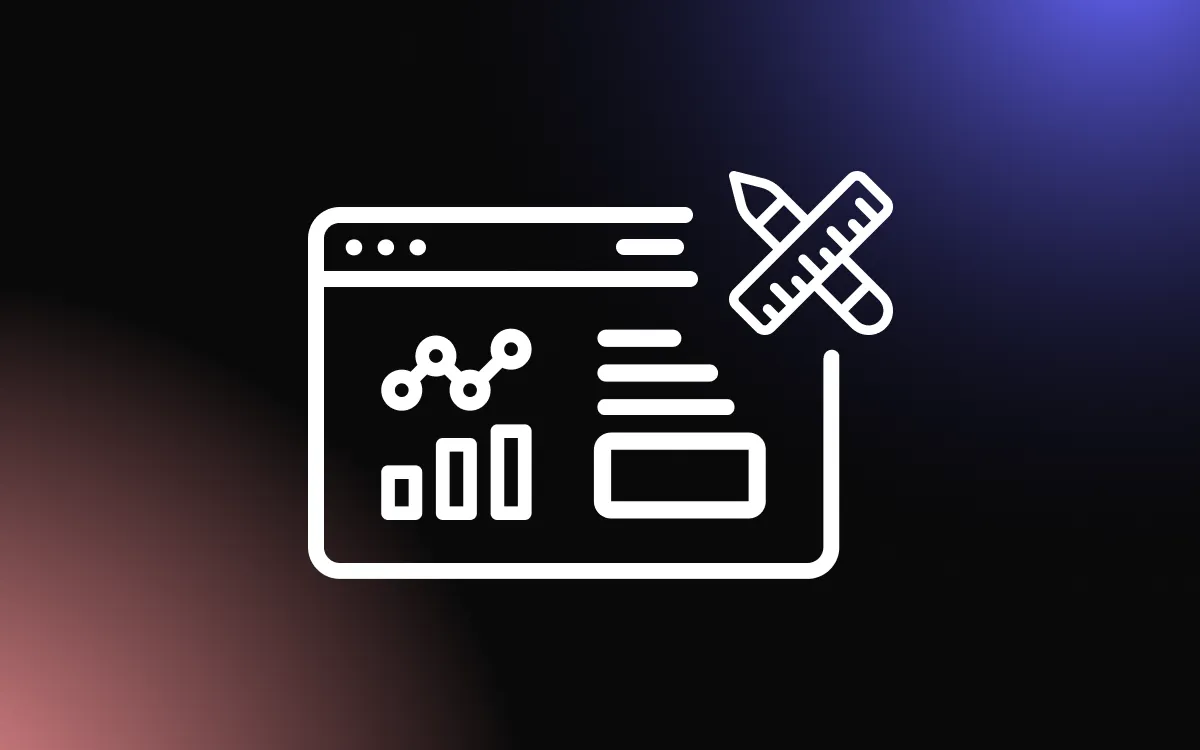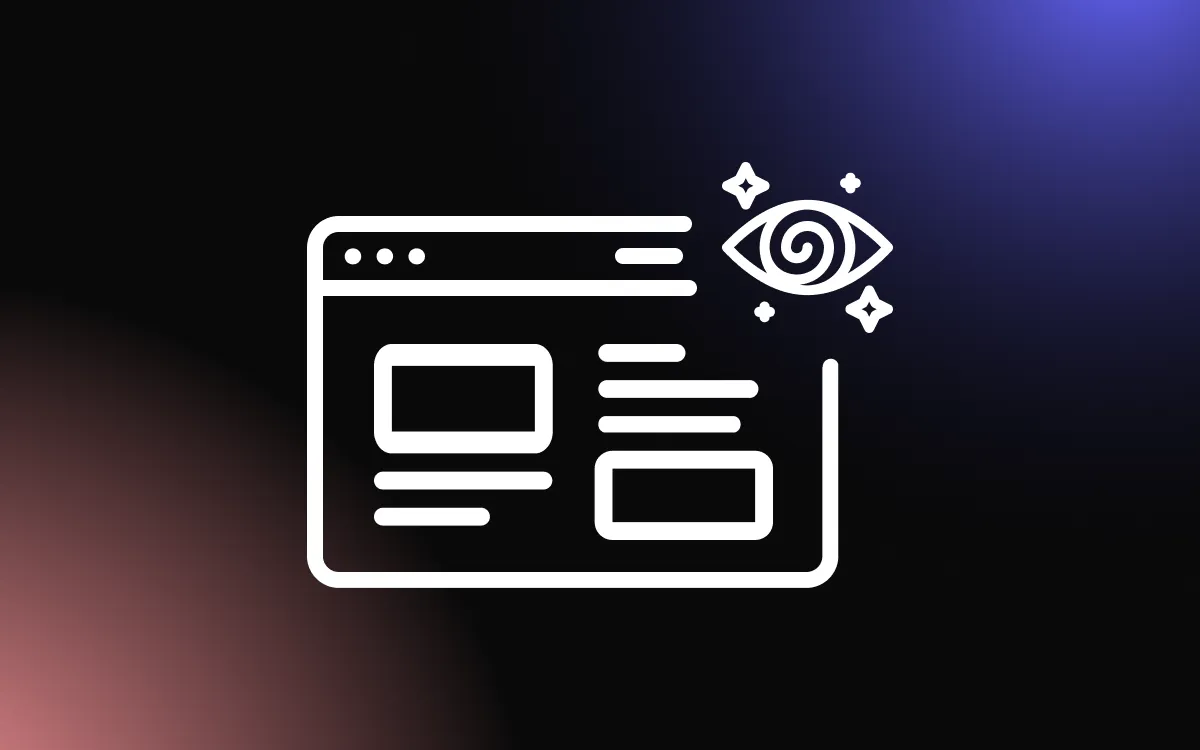
User Interface (UI) Design is akin to a magical tool that morphs intricate procedures into straightforward, instinctive, and aesthetically pleasing experiences. It's a harmonious blend of art and science, shaping the aesthetics, feel, and functionality of every element users come across in a digital product.
This article is your friendly guide to grasping the essentials of UI Design. We'll embark on a journey through the core principles of UI Design, its pivotal role in the digital realm, and its symbiotic relationship with User Experience (UX) in crafting fluid digital journeys. A special focus will be given to website layouts, a critical aspect of UI design that greatly influences user engagement and satisfaction.
Whether you're an aspiring designer, a digital aficionado, or a business owner aiming to boost your online footprint, this article will equip you with the knowledge to craft a user interface that is not only visually enthralling but also functionally streamlined.
Defining User Interface (UI) Design

Definition of UI Design
User Interface (UI) design is a discipline of design focused on the visual, interactive elements of a product's interface. It encompasses the buttons users click on, the text they read, the images, sliders, text entry fields, and all the rest of the items the user interacts with.
This includes screen layout, transitions, interface animations, and every single micro-interaction.
UI design is responsible for translating a brand's strengths and visual assets to a product's interface to ensure a cohesive and consistent design that resonates with users and maintains aesthetic appeal.
The Role of UI Design in Digital Products
UI design plays a crucial role in the functionality and appeal of digital products. It's the bridge between the user and the product, making sure that the interface is intuitive, easy to use, and aesthetically pleasing.
A well-designed UI can significantly enhance the user's experience by making the interaction smooth, efficient, and enjoyable. It can also contribute to a product's success by improving its usability and influencing the user's perception of a brand.
Difference Between UI and UX
While UI and UX design are often used interchangeably, they refer to different aspects of the product design process.
UI design is more concerned with the surface and aesthetics of a product's interface, focusing on the product's look and feel. It involves designing the visual elements that the user interacts with, such as buttons, icons, and spacing.
On the other hand, UX design is more focused on the overall user experience, ensuring the product is easy to use, intuitive, and meets the user's needs. It involves a broader scope, including aspects such as user research, information architecture, and usability testing.
Elements of User Interface Design

Layouts and Grids
Layouts and grids are fundamental elements of UI design. They provide a structured and organized framework for arranging content and elements on a screen. A well-designed layout enhances the user's ability to understand and interact with the content.
Grids, in particular, help maintain alignment and consistency in the design, ensuring that elements are placed with precision across different screens.
Typography
Typography plays a crucial role in UI design. It's not just about choosing a font that looks good; it's about readability, accessibility, and usability.
Good typography enhances the user's ability to read and understand the information presented. It involves selecting appropriate typefaces, setting the right font size and line spacing, choosing the correct color for text, and ensuring sufficient contrast between text and background.
Colors and Images
Colors and images are powerful tools in UI design. They can evoke emotions, guide the user's attention, indicate actions, and contribute to the overall aesthetic of the product.
Color choices should align with the brand's identity and should be used consistently throughout the product. Images, including illustrations and icons, should be used strategically to support content and enhance user comprehension.
Buttons and Icons
Buttons and icons are interactive elements that guide users through their journey within the product.
Buttons indicate where users can take actions, such as submitting a form or proceeding to the next step. They should be designed to stand out and be easily recognizable. Icons, on the other hand, are used to represent actions or content in a minimalistic way. They should be simple, clear, and consistent in style.
Forms and Input Fields
Forms and input fields are key components of many interfaces, allowing users to input information, make selections, and perform tasks.
Good form design enhances usability and improves the overall user experience. This involves making forms easy to navigate, providing clear and helpful error messages, and designing forms that are easy to fill out on all devices.
The UI Design Process

Understanding the User and Their Needs
The first step in the UI design process is understanding the user and their needs. This involves conducting user research to gather insights about the users' behaviors, needs, and motivations.
It's crucial to understand who the users are, what they want to achieve, and what problems they might encounter. This information forms the foundation for the design process and guides the design decisions.
Designing the Interface
Once the user and their needs are understood, the next step is designing the interface. This involves creating the visual elements of the interface, such as the layout, colors, typography, buttons, icons, and forms.
The design should be guided by the insights gathered during the user research stage and should aim to create an interface that is intuitive, aesthetically pleasing, and easy to use. This stage often involves sketching, wireframing, and creating high-fidelity mockups to visualize the design.
Prototyping
After the design is finalized, the next step is prototyping. A prototype is a working model of the interface that allows the design team to test the functionality and usability of the design.
Prototypes can range from low-fidelity models, such as paper prototypes, to high-fidelity models that closely resemble the final product. The level of fidelity depends on the stage of the design process and the goals of the testing.
User Testing
Once the prototype is ready, it's time for user testing. This involves observing users as they interact with the prototype and gathering feedback about their experience.
User testing can provide valuable insights into how users interact with the interface, what problems they encounter, and how the interface can be improved. The feedback gathered during user testing should be used to refine and improve the design.
Iteration and Implementation
The final stage of the UI design process is iteration and implementation. This involves refining the design based on the feedback from user testing, implementing the design, and then repeating the process. Iteration is a key part of the UI design process. It's about continuously testing and refining the interface to ensure that it meets the users' needs and provides a positive user experience.
Once the design is finalized, it's time for the development team to implement the design and bring the interface to life. This involves coding the interface and integrating it with the backend systems.
Importance of Good UI

Impact on User Engagement
Good User Interface (UI) design plays a crucial role in user engagement. A well-designed, visually appealing interface can draw users in and encourage them to interact with the product. It can make the difference between a user staying on a page and exploring further, or leaving and never returning.
For instance, an intuitive navigation system can help users find what they're looking for more easily, increasing their engagement with the content. Similarly, interactive elements like buttons and forms can provide a more engaging user experience, encouraging users to interact with the product.
Influence on User Satisfaction and Conversion Rates
UI design also has a significant impact on user satisfaction and conversion rates. A user-friendly interface that's easy to navigate can enhance user satisfaction, leading to a positive user experience.
On the other hand, a poorly designed interface can lead to frustration and dissatisfaction, causing users to abandon the product. This can have a direct impact on conversion rates. For example, a confusing checkout process can lead to cart abandonment, while a clear and intuitive process can increase conversions.
Role in Branding and Identity
Finally, UI design plays a crucial role in branding and identity. The visual elements of the interface, such as colors, typography, and images, can convey the brand's personality and values. A consistent and cohesive UI design can strengthen the brand's identity and make it more recognizable to users.
For example, a brand that wants to convey a sense of luxury might use a minimalist design with a sophisticated color palette. On the other hand, a brand that wants to appear fun and youthful might use bold colors and playful fonts.
UI Design Best Practices

Consistency in Design
Consistency is a fundamental principle in UI design. It involves using the same elements and patterns throughout the interface, making it easier for users to understand and navigate. This includes consistent use of colors, fonts, button styles, and layout structures. A consistent design reduces the learning curve for users and enhances the overall user experience.
Clarity and Simplicity
Clarity and simplicity are key in UI design. The interface should be clear and easy to understand at a glance. This involves minimizing clutter, using clear and concise language, and prioritizing essential elements. A simple and clear design can improve usability, reduce user errors, and enhance the overall user experience.
Responsive and Adaptive Design
With the proliferation of devices with different screen sizes, it's crucial to design interfaces that can adapt to different environments.
Responsive design involves designing interfaces that automatically adjust their layout based on the screen size. Adaptive design, on the other hand, involves designing different layouts for different screen sizes. Both approaches aim to provide an optimal user experience across all devices.
Accessibility in UI Design
Accessibility is a crucial aspect of UI design. It involves designing interfaces that can be used by all people, including those with disabilities.
This includes providing alternative text for images, ensuring sufficient color contrast, and designing controls that can be easily navigated using a keyboard. Designing for accessibility not only ensures compliance with legal requirements but also improves usability for all users.
Use of Visual Hierarchy
Visual hierarchy is a powerful tool in UI design. It involves arranging elements in a way that reflects their importance. This can be achieved through the use of size, color, contrast, and placement. A strong visual hierarchy can guide users' attention, making it easier for them to understand the interface and find the information they need.
Tools for UI Design

Design and Prototyping Tools
Design and prototyping tools are essential for creating and testing UI designs. They allow designers to create wireframes, mockups, and interactive prototypes.
Sketch is a popular tool for UI design, known for its simplicity and efficiency. It offers a wide range of features for designing interfaces, including symbols and styles, vector editing, and plugins to extend its functionality.
Figma is another powerful tool that allows for collaborative design. It's web-based, so team members can collaborate in real-time, no matter where they are. It also includes prototyping capabilities, making it easy to create interactive prototypes.
Adobe XD is a comprehensive tool that allows for both design and prototyping. It's part of the Adobe suite, making it a good choice for those already using Adobe products.
Graphic and Illustration Tools
Graphic and illustration tools are used to create visual elements for the interface, such as icons and images.
Adobe Illustrator is a powerful tool for creating vector graphics. It offers a wide range of features for creating and editing graphics, making it a popular choice for UI designers.
Affinity Designer is another tool for creating vector graphics. It's known for its speed and precision, and it's a more affordable alternative to Adobe Illustrator.
UI Testing Tools
UI testing tools are used to test the interface and gather feedback. They can provide valuable insights into how users interact with the interface and where improvements can be made.
UsabilityHub is a platform that allows you to conduct quick and simple tests with a large network of participants. You can run five-second tests, preference tests, click tests, and more.
UserTesting is another platform that provides video feedback from users interacting with your designs. You can watch and listen to users as they interact with your prototypes, leading to valuable insights.
Conclusion
In conclusion, understanding the basics of User Interface (UI) Design is an essential step in creating digital products that are not only visually appealing but also intuitive and user-friendly. It's about creating a visual language that communicates functionality, maintains consistency, and enhances usability.
Remember, a well-designed UI is not just about aesthetics; it's about creating an interface that facilitates smooth interaction between the user and your digital product. With the insights and principles shared in this article, you're now better equipped to embark on your UI Design journey. So, let's put these principles into action and create digital interfaces that are as beautiful as they are functional.


